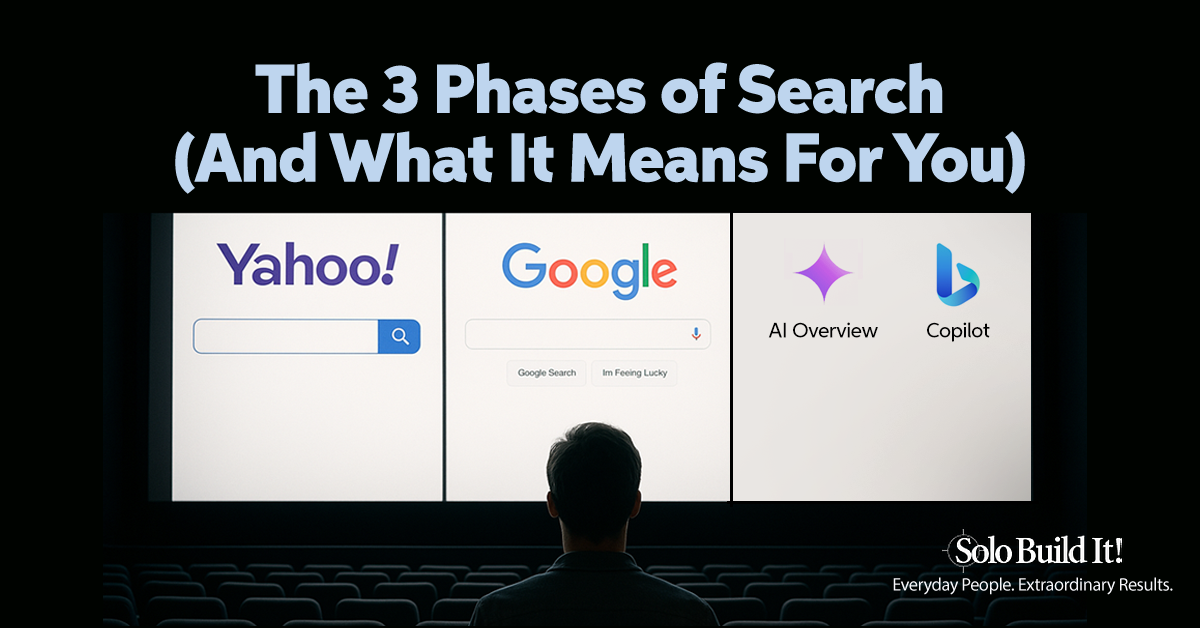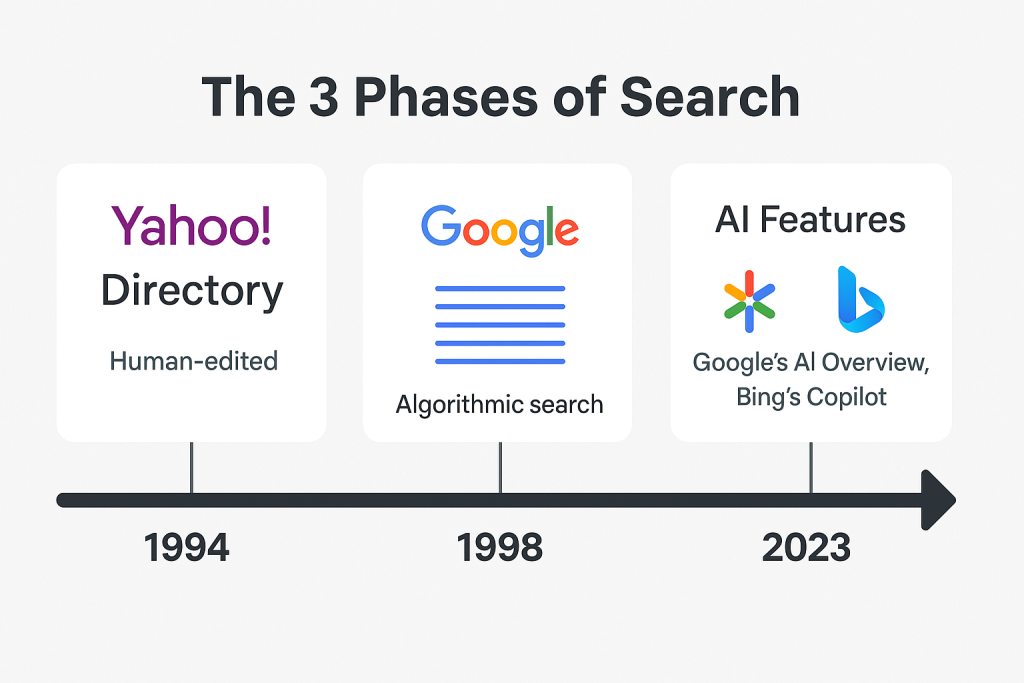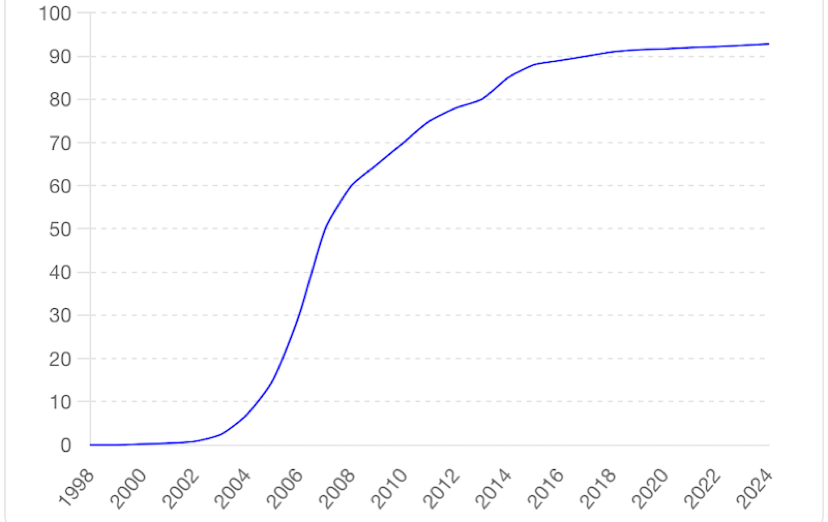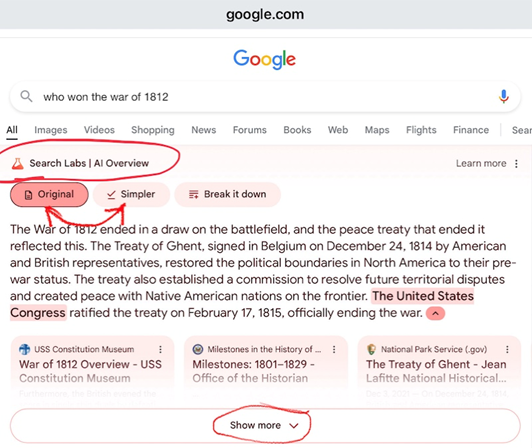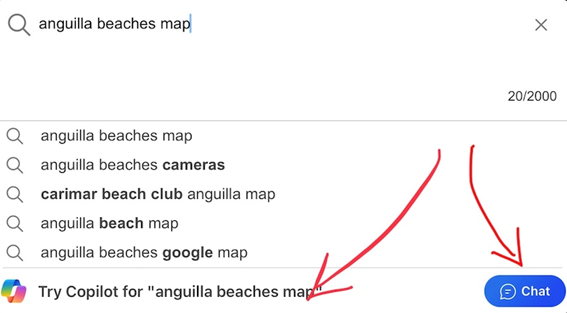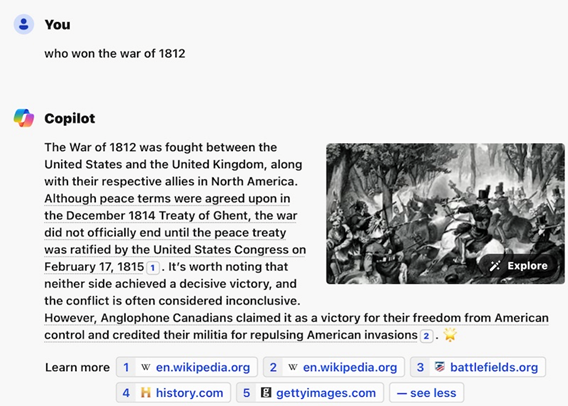For over two decades, “search” meant one thing: type in a keyword, get “10 blue links.” Simple, right? But underneath that simplicity, a revolution has been brewing.
We’re moving beyond those familiar blue links into an AI-driven era. To make sense of this new world, we need to understand the evolution of search.
The story of search can be told in three key phases. Let’s explore this journey, from the early days of Yahoo! to the AI-driven search we see emerging today…
So, pre-AI, there was only one way to search after the transition from Yahoo! (directories) to Google (“10 blue links”). Now, 20 years later, we find ourselves in the final transition…
With AI, we need to segment current-day search into three categories. The two new versions, based on AI, meet the needs of the searcher better. And, in turn, so must you…
The searcher’s goal is fulfilled with but a single click. The better, faster and more consistently AI search delivers on a single click, the faster the 10BL format will diminish.
I don’t see AI-based search results doing anything other than get better and faster. So it’s time to adjust to how AI impacts your efforts to grow traffic from search.
Let’s review the three phases of search…
“Regular” Search: The Search We All Know
Search History 101: From Webcrawler to Google’s Reign
This is the search that we all know. In the late 90s/early 2000s, there were several search engines. The dominant players were Webcrawler and Lycos (1994), Alta Vista and Infoseek (1995), Excite (1996), Yahoo! (1997-2003) and, finally, Google. Why “finally”?
Because Google ended the parade. It became the dominant search engine by 2003. Google has held onto its crown as the most popular search engine globally and across all devices, increasing market share to 90+% by 2014, where it has remained.
This transition, from Yahoo!’s directory (human-compiled, couldn’t scale) to Google Search (spider-aggregated, does scale) is moving on to the third, and final (?), technology — Generative AI.
What did each mean for the user?
- With directories, you drilled down with multiple clicks until you found the site you wanted.
- Google, on the other hand, displayed its best results from its comprehensive database of results.
- Google’s AI pulls the most relevant information from the best sites to deliver a single essay (an “AI Overview”), citations included, at the top of the SERP. The classical 10 blue links (10BL) appear below that.
You may not see the 10BLs, though. AI Overview often takes up much of the screen real estate (although Google has been reducing its size over the past few months).
Bottom line: With each transition, the human searcher makes fewer clicks. As more people feel the benefit of AI search, its use will grow substantially.
How Does This Impact Other Search Engines?
Google’s closest competitor, Bing, holds a market share of around 3.7%, followed by Yandex (Russia) at 1.6%, Yahoo! at 1.2%, and Baidu (China) at 0.9%.
All are facing the third major change in how people search. This is a huge opportunity for “all except Google” to gain meaningful market share. For example, if Google were to lose 3.7% of its share to Microsoft, that would double Microsoft’s share.
Google’s loss of 3.7%, down to 89.1%, may seem arithmetically insignificant. However, its impact on profits is significantly greater (due to operational leverage) than its 3.7% hit to revenue.
Or Google may grow its net revenue due to an increase in total global search volume. Suppose that increases by 5%, due to increased publicity about, and better user experience of, AI Search. Even if Google’s search share were to drop by 3.7%, it would still end up growing by 1.1%.
This period of transition represents a great opportunity for all search engines. All except Google, which faces high risk.
Knowing the history of search gives you the perspective to help you optimize future outcomes. Let’s review the three phases of search…
Phase 1: Yahoo! Directory — The Human Touch (That Couldn’t Scale)
Few people know that Yahoo! was originally not a search engine, but a human-compiled directory. The site owner submitted a manual application, followed by human evaluation. Many sites were refused admission, while accepted sites were “categorized” appropriately.
It was probably better then, in some ways, than Google is today — you always found a strong site. Compiled and categorized by humans, you clicked down through categories and subcategories until reaching an excellent site.
However, this human-compiled search tool was doomed from the moment it launched, even as it grew to #1. It was never able to scale. The weight of the web’s exponential growth crushed it.
Yahoo! was a victim of its own model, and of the web’s success. It was so overwhelming that the backlog for admission grew to many months long.
Initially free, it started to charge $300 to apply. That ruled out sites whose owners didn’t think they could pass the admission test. This helped at first, but Yahoo! was soon overwhelmed again.
Phase 2: The Google Revolution — From Human Directories to Spider-Powered Search
Slowly, Yahoo!’s leadership dwindled, as the steamroller that was Google could not be stopped.
Google, online since 1998, passed Yahoo! in 2003. It reached #1 in just five years. From there, it soared to its current dominating status.
Google’s growth from 1998 to 2024 shows the classic innovation S curve…
Growth companies that show this S curve are considered mature when they reach a steady plateau. These companies are often ripe for disruption, typically by a company with a new and superior technology.
Based on the graph, Google has clearly matured. Will AI spawn a competitor to disrupt it? Or will Google ride AI to even greater heights? Huge question — we’ll discuss it later.
Bottom line: Regular search is where “the algorithm” lives. Algorithm changes are causing the most damage at the time of this writing. Google is ripe for disruption.
Regular Search Today: What It Looks Like And Why It’s Still Relevant
Today, of course, the words Google and “search” have become synonymous. The information and conclusions about Google apply equally to Bing, Yandex, Yahoo!, DuckDuckGo (0.6%), and the remainder (Ecosia, Brave, and Ask), all under 0.5%.
This type of search, “Regular” Search, does not include any AI features that have been added to search. In other words, we ignore any AI features such as Google’s AI Overview. Once you type in your keyword, you get back those 10BLs.
Ignoring add-on AI results (such as SGE — Search Generative Experience, now called AI Overview) lets us think and converse based on an organized, logical framework when analyzing and talking about search.
The only exception to “No AI in regular search” is the AI built right into Google. It works invisibly within the search algorithm. We know that an AI called “RankBrain” influences the final output of search. RankBrain’s influence grows regularly and, at some point, will dominate in importance.
You’ll never see it in action. Nor is it possible to reverse-engineer it. That said, some SEOers try.
By the way, most of us equate AI to Generative AI (GAI) and ChatGPT. That’s because of the exponential growth of ChatGPT since its announcement in November 2022. However, AI started decades before, in the form of machine learning, neural networks, etc.
RankBrain has been based on machine learning (ML) since its initial deployment in 2015. It might also use other forms of AI, such as Natural Language Processing (NLP), Deep Learning, Neural Networks and, most recently, GAI.
Example: In chess, a computer learns by playing countless games against itself. It starts at “zero chess knowledge.” It’s then taught the rules, the value of the pieces, what constitutes a win. That’s it, nothing else.
It’s then sent out to play millions of games against itself. It learns from its own experience and develops its own strategies without relying on human-defined chess knowledge. Nine hours later, during which it has played 44 million games (!!), it has gone through a staggering learning curve, emerging at World Champion Plus level.
Google has only confirmed that machine learning is at the core of RankBrain. Beyond that, it offers only high-level information.
However, considering the complexities of search query understanding, user behavior analysis, and ranking optimization, it’s reasonable to assume that RankBrain leverages a combination of other AI techniques to accomplish its objectives. And now…
Many experts consider the use of GAI to be a logical next step in enhancing search result relevance (through improved keyword understanding, especially for complex and nuanced queries), and user experience (e.g., through personalized search results).
For our purposes, the AI of RankBrain is buried in the algo, working invisibly. It really doesn’t matter what types of AI are used.
Why not?
Because the two most important technologies, ML and GAI, are “black boxes,” meaning that even experts cannot reverse-engineer them.
The addition of a second adds yet more black box complexity. Also, the combination of the two multiplies the complexity! So, whether there’s one AI technology in RankBrain or 100, it all boils down to “black box.”
I mean, if it can’t be figured out at one level, does it really matter that it gets that much more impossible to solve at another level?
I discuss this later in my book “Make Your Site Win (Again),” but I’ll give you a “spoiler” now.
Spoiler: By now, you can see how simple, relatively speaking, Google was prior to using AI. I’ll call this “Pre-AI Google” or “Google 1.0.”
Then came RankBrain in 2015. It has grown in importance for search rankings, now #3 behind only content and links. I expect the importance of links to continue to decrease, while content will always be #1.
So, to oversimplify in a useful way, RankBrain refines Google’s understanding of the keyword/query. And now that it’s better understood, GAI writes an AI Overview essay based on RankBrain’s superior comprehension.
It’s almost like love, the way they fit so well.
But…
GAI shoots Google’s complexity even higher. This is “Post-AI Google,” aka “Google 2.0.” And its secret code is forever beyond comprehension.
Key Takeaway: Why “SEO Mastery” is a Myth in the Age of AI Search
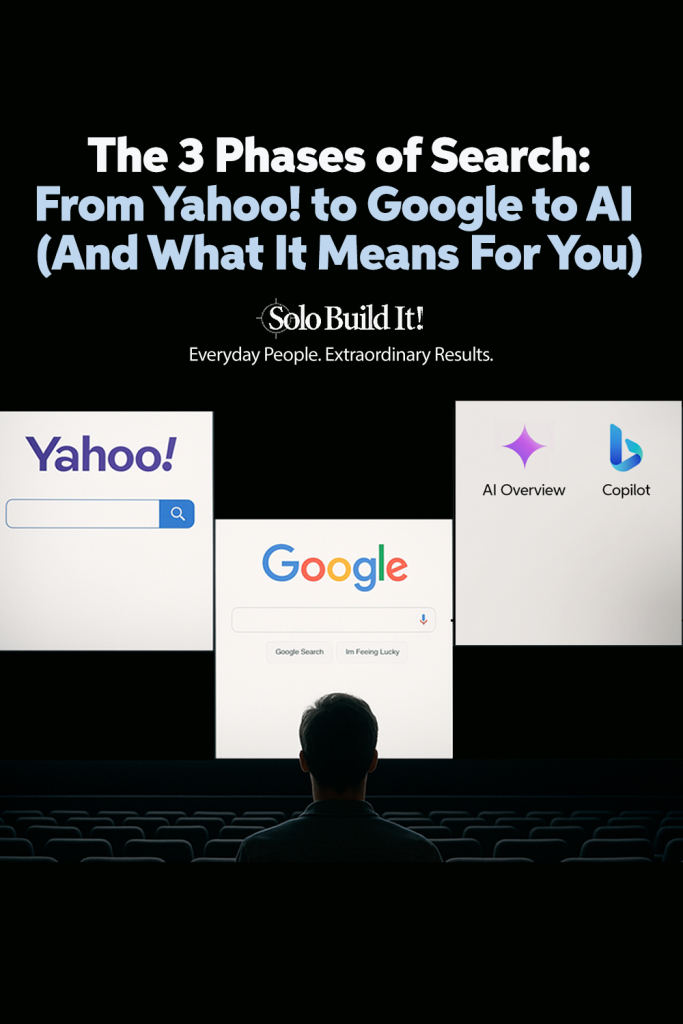
Given the above inarguable information…
One of my most important recommendations is to ignore any claim to have a system that masters high rankings in the SERPs. No such thing exists.
Some folks spend so much time SEO’ing their websites to zero effect, or even negative effect. They could be spending that time either creating more user-loved material or improving their existing good content to best-of-niche.
Tip: Are you worried about your ability to remain objective when evaluating your own content? It’s a reasonable concern in both directions… too severe or too gentle.
Handle this by asking a friend to assess two pages, one from your site and one that covers the same topic (i.e., from the same SERP) from your strongest competitor’s site.
Ideally, you should first copy-and-paste both text and image content into two separate text editor files, especially if your tester has ever been on your site. Do not tell your tester which is which. This prevents biased results.
We now arrive at the third (and current) “phase” of the evolution of search – or – “the three phases of search.”
Phase 3: AI Features — Search Gets a Whole New Dimension
Phase 1 was about human-curated directories (e.g., Yahoo!). Phase 2 was/is about spider-gathered web pages, by the billions (e.g., Google). And Phase 3 is about the use of AI to generate essay-style answers.
An AI Feature (AIF) is different from standalone AI search. It’s any AI-generated feature that’s added to a SERP in response to a regular search.
Google launched a version of this in May 2023, naming it “Search Generative Experience” (SGE). The Bing version (Microsoft using ChatGPT) launched earlier. We’ll stick to Google because AIFs are tied to search results, and Google dominates at regular search.
AI Products (AIPs), which we’ll discuss in a few minutes, originate from their own dedicated domain or folder/subdomain… chat.gpt.com, bing.com/copilot, gemini.google.com, perplexity.ai.
Google renamed SGE “AI Overview,” announcing it at Google I/O 2024 (May 2024).
AI Overview appears at the top of a search results page. Generated by Gemini, AI Overview provides users with “quick, summarized answers to complex queries” (per Google).
Here’s an example…
Delivered directly in the SERP, this feature is not part of regular search. For our purposes, it’s AI-driven and added above the search results (the 10BLs), which makes it an AIF.
Both AIF and AIP are AI-driven, but…
- AIF is a feature added to a search results page.
- AIP is a standalone product. It has its own URL. There are no regular search results.
Why use the regular search/AIF/AIP framework? Two reasons…
- It helps you to compartmentalize search into three distinct types — regular search, AIF and AIP (standalone). This keeps the types clear and separate in your brain.
- It also helps you to discuss these with clarity. For example, if you were to ask a question (or give an answer) about “AI search,” someone will, I hope, correct you and ask whether you’re referring to “AI feature” or “AI product.” If you just have a question about search, everyone understands that you’re referring to the SERP with the 10BLs.
We’ll use AIF when we want to refer to any AI-based feature that’s added to any search engine. The name says what it is.
AI Overview is the most recent, full-fledged AIF. Google’s Gemini generates one summarizing answer — an essay about the search term or that replies to a question. It also includes several links to the most relevant web pages, to provide what it considers to be good “go deeper” links.
Google’s goal is to provide helpful and informative summaries for users. The presence or absence of an AI Overview depends on various factors, including the type of search, the quality of available information on the web, and Google’s confidence in understanding and fulfilling the user’s search intent.
What about the links? Researchers are reporting that some of these links correlate with the ones that get Top 10 rankings at the SERPs for the same keyword. But the process goes beyond picking from the 10BLs…
Think of the link-generating process as the AI “reading” and “understanding” the content, then selecting the links that best complement its summary. It adds diverse perspectives to enable you to round out its report.
Remember, AI Overview creates its report without knowing the sources that contributed to it. It’s the same way you or I would write an essay on any topic — we don’t remember what books, news sources, websites and blogs formed our knowledge.
So those links generated for AI Overview often don’t appear in the SERPs, which adds extra opportunities for you.
AI Overview became available to the entire US on May 14, 2024. It’s now in over 100 countries around the world, available in multiple languages.
Use this neat tool to track the prominence of AI Overviews over time, by industry and search intent.
The Bing Perspective: How Copilot Compares to Google’s AI Overview
Bing introduced Copilot (formerly Bing Chat) in December 2023. It’s at bing.com/copilot.
Unlike search, Copilot uses AI (ChatGPT) to understand conversational queries, “providing helpful and engaging answers in a chat-like format” (says Microsoft). It streamlines web browsing by offering context-aware responses and ongoing conversation capabilities.
You can find Copilot on Bing Search below your keyword search and Bing’s keyword recommendations. As you can see, you can choose, for any search, when you want to do an AI search either by clicking on the Try Copilot listing or on the Chat button, as shown here…
That yields a Copilot page, looking something like this when I asked it, “who won the war of 1812”…
Google, on the other hand, decides when to deliver an AI Overview answer at the top of the SERP. You don’t even get to see any hints that an AI Feature exists on Google’s search page.
Finally, if you compare Google AI Overview’s answer to Bing Copilot’s, the two are very similar. Each provides a summary of the answer, and includes a link to one or more highly ranked pages for that search term.
Also, you get a choice of three summary lengths. AI Overview provides the briefest, and then Copilot. Want something a little longer? Return to AI Overview and click on the Search More button at the bottom.
Conclusion: Expect to see quite a bit of news about the testing of this type of search result. For example, you may read that one bot or another is either doing more or less AIF. There’ll be speculation, while all they’re doing is testing.
In the mid/long run, as the AIF format proves itself superior, I expect to see search engines generate AIFs for a steadily increasing percentage of searches.
Try to imagine the complexity of what a GAI does here. It’s enormous, even for Google’s Gemini. So there will be a lot of experimenting, fine-tuning and “live” testing (i.e., with actual users in real time).
It’s possible that Google may not be able to achieve the results that it wants. In such a case, it could switch to an entirely different format — copying Perplexity, for example. Or Google might develop a revolutionary new way for folks to get the info they want, as quickly as they dream about.
The Three Phases of Search: From Past to Present — And What’s Coming Next
Search was fairly stagnant for 20 years, incrementally improving the small stuff, and then…
💥💥💥
Since OpenAI announced ChatGPT-3 in November 2022, the tool and several new version releases have swept the globe. For the first time in the history of software, generative AI has been rapidly getting stronger and faster and cheaper, an indication of scale (which is extreme).
It seems like we’ve come a long way. The reality is that we’ve barely scratched the surface.
The three phases of search have brought us to an inflection point. But what comes next? In our upcoming article, we’ll look ahead to “The Future of Search,” exploring where AI is taking us and what website owners need to prepare for. Join us as we shift our gaze forward and explore the exciting — and perhaps unpredictable — next era of search.
Subscribe For Free
Read Other Articles in This Series:
Ken Evoy Releases New Book to Help Website Owners Recover from Google Updates
Beyond the Helpful Content Update: The Real Lessons Google is Teaching Us About the Future of Search
Large Language Models: What Content Creators Need to Know

Latest posts by Ken Evoy (CEO, SiteSell) (see all)
- Understanding the 3 Phases of Search: A Guide for Website Owners - April 10, 2025
- Large Language Models: What Content Creators Need to Know - March 13, 2025
- Beyond the Helpful Content Update: The Real Lessons Google Is Teaching Us About the Future of Search - February 19, 2025

